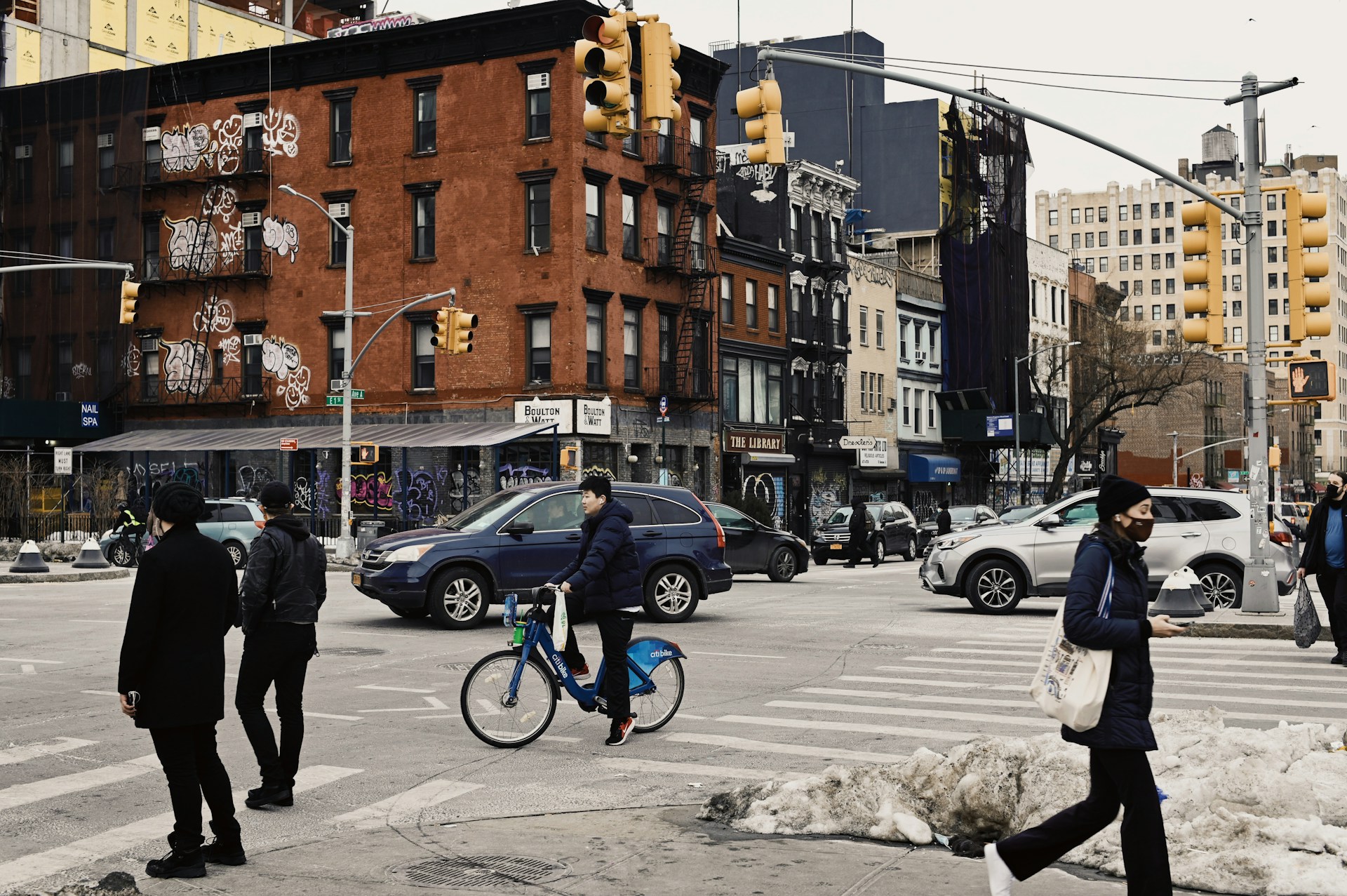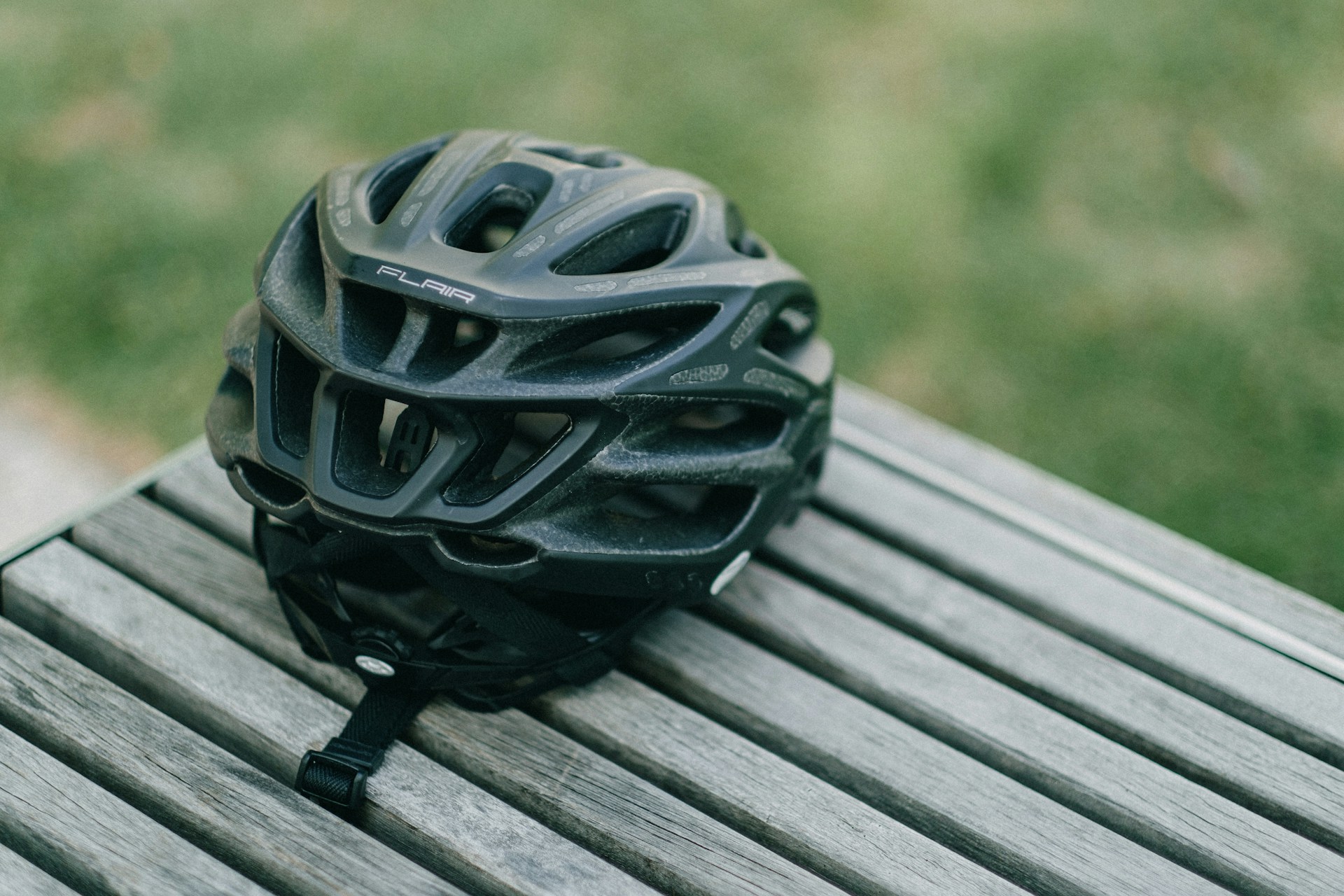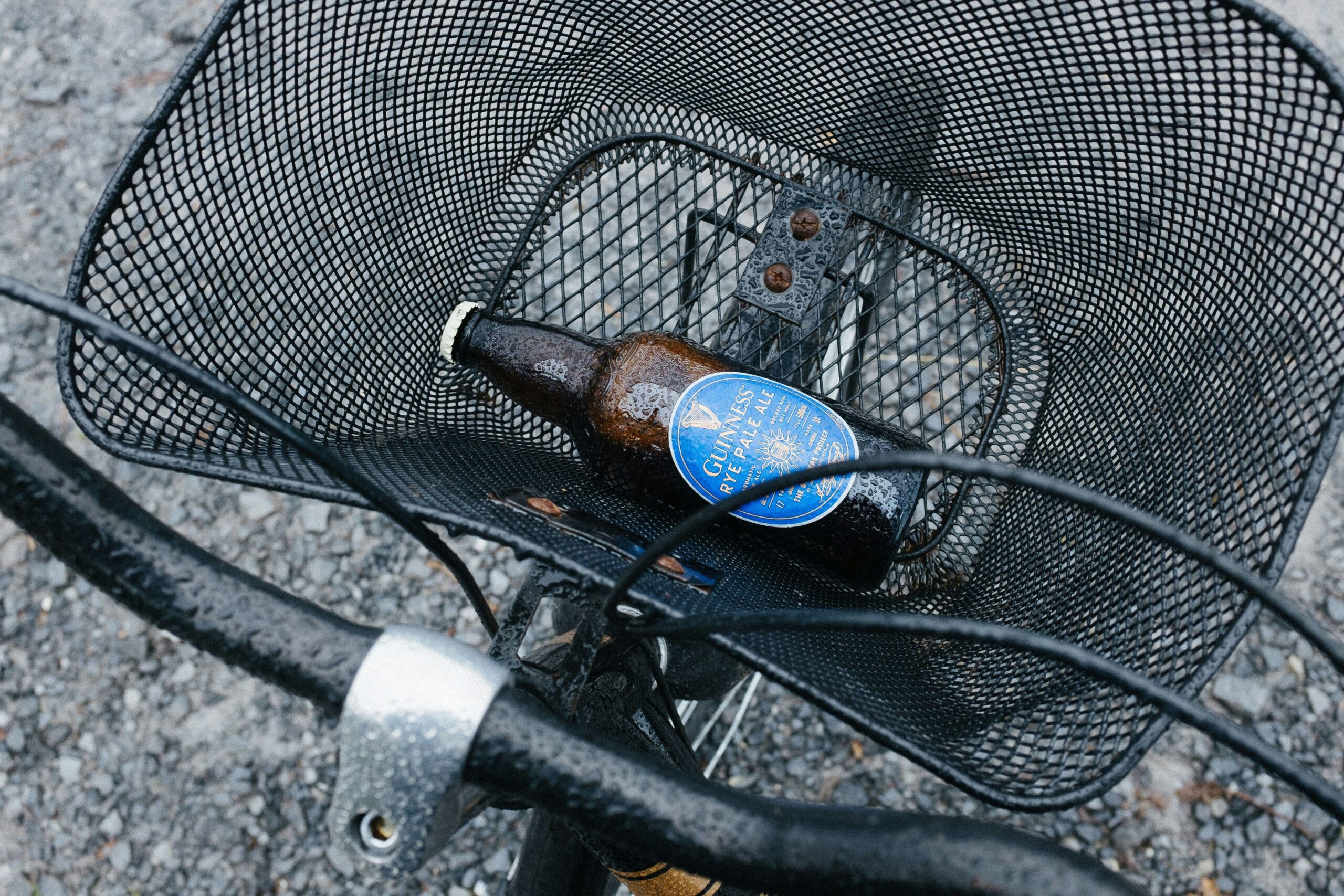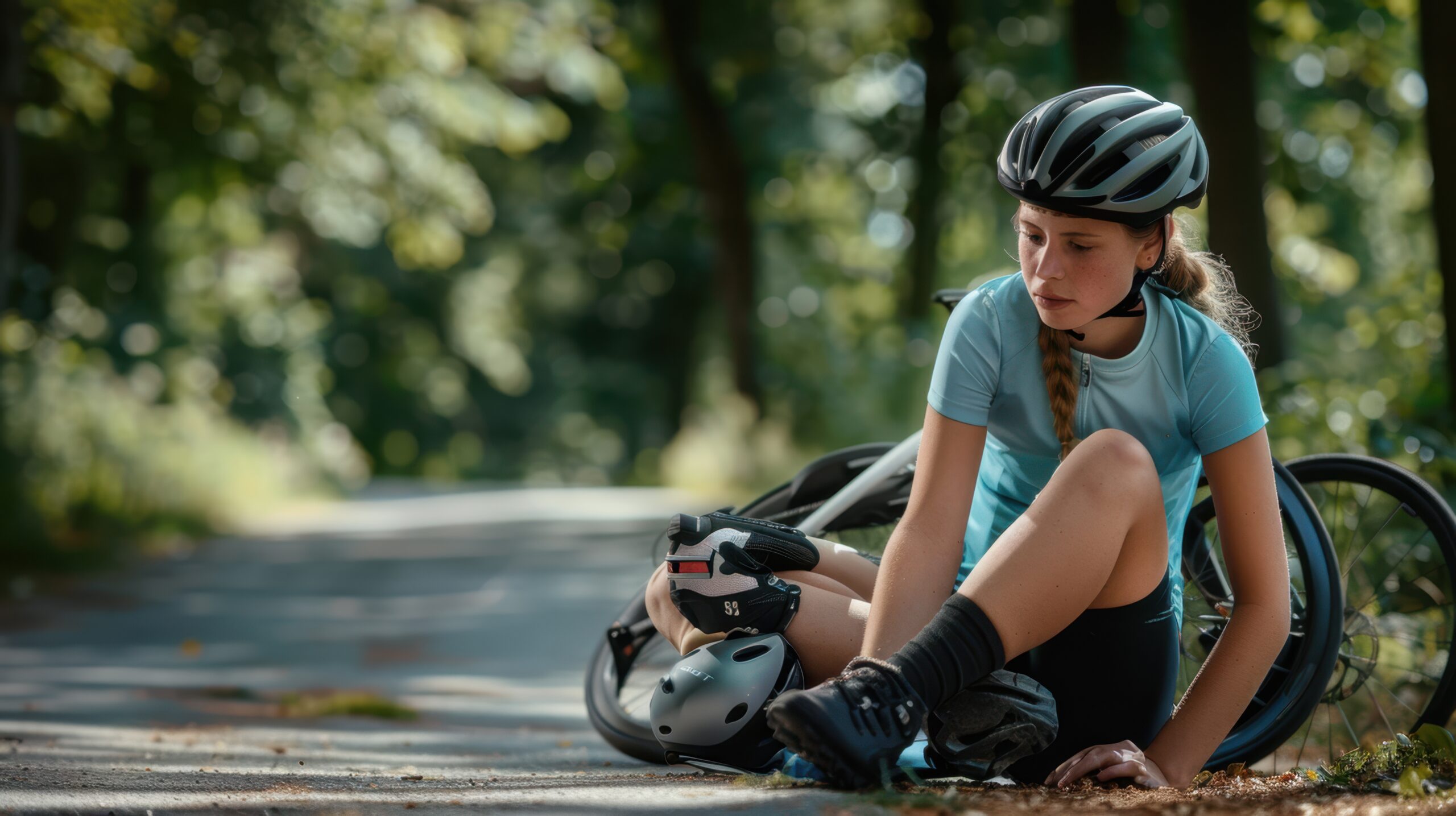A few intersections in NYC, such as Bruckner Blvd & Longwood Ave and Linden Blvd & Pennsylvania Ave, are more dangerous than others. Especially, when it comes to vulnerable road users such as cyclists. Riders who are aware of these hotspots automatically improve their safety score. Knowing where most accidents occur doesn’t necessarily mean you’ll be able to avoid them, but it does mean you can stay more alert when passing through those areas.
Let’s not forget that active bicyclists can help the city improve the situation. The more people start to advocate for riders’ safety with palpable proof at hand, the better an impact such programs as Vision Zero will have.
Since the matter is nothing short of pressing, our team has carried out a detailed analysis of the current situation with intersections in the city, and we’re ready to share the insights!
- Data & Methodology: How Are Intersections Ranked?
- Most Dangerous Intersections in NYC
- Main Reasons Why Intersections Pose Danger to Cyclists
- Common Risk Factors at Dangerous Intersections
- What NYC Is Already Doing: Policies, Vision Zero & Infrastructure Improvements
- What Cyclists Should Be Aware Of & Safety Tips
- How Can Citizens Advocate for Safer Intersections?
- Intersection Safety: Challenges, Limitations, and Roadblocks
- Key Takeaways
- Resources
- Get a FREE case evaluation today
Data & Methodology: How Are Intersections Ranked?
Not every intersection is equally dangerous. Some spots hit the top of the list, and others remain at the end. Various statistical data resources, like NYC DOT, Crash Stat, OpenData, Vision Zero View, and NYC Crash Mapper, help to identify particular trends and patterns that allow for unbiased ranking.
Often, there are many contributing factors to notice and evaluate. In some areas, heavy traffic loads lead to frequent crashes, while the infrastructural design is the culprit in others. Let’s not forget that the presence or absence of equipped bike lanes plays a major part in the overall safety of local riders.
Injury severity is also on the table. For example, an intersection known for frequent crashes with minor traumas may not be ranked as the most hazardous in the city. At the same time, a location with fewer accidents but a higher percentage of bicyclists severely or fatally injured by a car will be at the top.
Such a plethora of details and nuances to consider means that it usually takes years, if not decades, to compile a ranking that will promote cyclists’ safety and eliminate most instances of serious crashes. However, understanding these rankings helps bicyclists plan their routes and provides critical evidence for bicycle accident attorneys addressing related accidents.
Most Dangerous Intersections in NYC
You don’t have to live in the Big Apple to instantly notice that some intersections feel riskier than others. It’s not your vivid imagination — certain spots are swarming with danger, and recent data from the NYC Crash Mapper proves it. Here’s the list of intersections that stand out for all the wrong reasons — the ones every NYC cyclist should treat with extra caution:
| Borough | Location | Number of injured |
| Bronx | Bruckner Blvd & Longwood Ave | 93 |
| Bronx | Bruckner Blvd & Leggett Ave | 77 injured, 1 fatality |
| Brooklyn | Buffalo Ave & Eastern Pkwy | 65 |
| Brooklyn | Jamaica Ave & Pennsylvania Ave | 60 |
| Brooklyn | Bushwick Ave & Jamaica Ave | 59 |
| Brooklyn | Linden Blvd & Pennsylvania Ave | 58 |
| Bronx | Bruckner Blvd & Hunts Point Ave | 57 |
| Brooklyn | Atlantic Ave & Pennsylvania Ave | 57 |
| Bronx | Bruckner Blvd & East 138th St | 54 |
| Brooklyn | Metropolitan Ave & Rodney St | 54 |
| Brooklyn | Linden Blvd & Rockaway Ave | 52 |
| Brooklyn | Kent Ave & Penn St | 48 |
These locations aren’t random spots. The list reflects data recorded in NYC over the past two years — 2023-2025(YTD). Now, let’s discuss all the boroughs separately, shall we?
Manhattan Intersections
The latest report from the NYPD indicates that 18% of all traffic accidents recorded in the city took place in Manhattan. These numbers make partial sense, since the borough is the financial and commercial center of New York City. At the same time, the data proves that you should always pay extra attention when crossing either of these intersections:
- West 153rd St and Macombs Pl
- Chrystie St and Grand St
- Bleecker St and MacDougal St
Manhattan is a combination of narrow streets, blind turns, and fading road markings. These factors combined leave cyclists especially exposed to danger.
Brooklyn and Queens Intersections
Brooklyn and Queens have some of the city’s worst intersections. Wide roads encourage speeding, while the outdated infrastructure can’t deal with such heavy traffic effectively. Not to mention that local drivers barely yield — 174 accidents happened happened in Brooklyn in September because of it.
Here’s a list of local intersections known for the most numerous close calls:
- Atlantic Ave & Flatbush Ave
- Tillary St and Brooklyn Bridge Blvd/Adams St
- Bedford Ave and Clarkson Ave
- 21st and Hoyt Ave N
- Northern Blvd and 51st St/Newtown Rd
The city authorities may have taken some effort to improve the situation in these boroughs, but there’s much work ahead to turn Brooklyn and Queens into accident-free districts.
Bronx and Staten Island Intersections
Neither the Bronx nor Staten Island can show off the same traffic volume as Brooklyn and Manhattan. However, it does not mean that they are completely risk-free to navigate through. In fact, three of the most dangerous intersections in NYC are located in the Bronx.
The bicyclist injury rates in Staten Island are significantly lower when compared to other boroughs — 11 bicyclists were injured on the island in September 2025. However, the borough has problematic intersections, too:
- Clove Road and Victory Boulevard
- Hylan Boulevard and Reid Avenue
- New Dorp Lane and Hylan Boulevard
Many of these intersections aren’t simply busy. They are designed to fail those who use them daily, and commuters pay the price.
Main Reasons Why Intersections Pose Danger to Cyclists
There are many reasons why bicyclists are at risk when riding through an intersection. First of all, it’s the concentration of traffic, with everyone heading in different directions. Then comes the ever-present rush, no matter whether it is rush hour or not. Lastly, the visibility isn’t the best. All these factors combined give riders less time to react and more possibilities for something to go wrong.
According to the latest US DOT report, around one-third of fatal bicycle crashes occur at intersections. The percentage is quite concerning, so you may want to learn more about the causes of accidents that predominate at intersections. There are a few:
- Right turns: Car drivers aren’t always familiar with the right-of-way rule. That is why, when making a right turn, they can cut off a rider.
- Side collisions: Not all the vehicle operators are as law-obedient as one would want them to be. So, when someone runs a red light, and you are making a turn, a side impact with severe consequences is a plausible outcome.
- Obstructed visibility: Unfortunately, most intersections are filled with multiple objects that limit one’s visibility. A large commercial truck, a traffic sign, or a wide corner can block your view and compromise the ability to act on time for all potential parties.
- Traffic volumes: The most obvious cause of an intersection collision would be the heavy traffic. Add multiple lanes and busy morning hours to the mix, and you’ll get an explosion-ready concoction.
You can’t take on responsibility for the actions of others at an intersection, but you can treat this dangerous zone accordingly and stay as alert as possible.
Common Risk Factors at Dangerous Intersections
If you’ve been to New York City, you know how hectic it seems with everything around you moving at once. The same goes for intersections. When you’re in one, you should be ready that a tiny flaw or a small unexpected move can transform a pleasant ride into an emergency.
We’re not trying to scare you here, but there are a few common factors that make local intersections more dangerous than anywhere else:
- No real bike protection. Sometimes, protected lanes disappear right before a major intersection, forcing cyclists into car lanes at the worst possible moment.
- Commercial chaos. Large trucks, buses, and delivery vans often create blind spots that those on two wheels struggle to overcome. If you are squeezed between a commercial truck and a turning car, there’s usually nowhere safe to go.
- Broken or confusing signals. Faded paint, misaligned traffic lights, or missing signs create situations where both riders and drivers mistakenly believe they have the right of way.
- Road defects. Cracked asphalt and various types of debris on roads aren’t recent news in the city. Such seemingly insignificant obstacles can throw a cyclist off balance in no time and push them under the wheels of oncoming traffic.
- Speed and impatience. A rider has only a few moments to scan the multiple lanes, judge other vehicles’ speed, and react on time.
Many crashes in New York aren’t accidental. They are the predictable outcomes of infrastructure weaknesses, driver behavior, and overall road chaos. In case you get injured at an intersection, a skilled attorney would know how to use these factors to defend your rights.
What NYC Is Already Doing: Policies, Vision Zero & Infrastructure Improvements
For quite some time, the New York City authorities have been working to make the city safer for all, especially the most vulnerable road user groups — cyclists and pedestrians. In 2014, the Vision Zero program was set in motion, and as recently as 2021, the NYC DOT launched a five-year Street Plan.
This year, in 2025, the city DOT reported that traffic accidents in NYC have reached their historical lowest point. During the first half of the year, the collision rate dropped by over 30% compared to the same period of 2024. Moreover, almost 30 miles of equipped bike lanes were installed last year. The numbers are slightly lower than promised, since 50 miles of equipped bicycle lanes per year have been agreed upon, but the improvements are evident.
The most recent updates on safety improvements across the city were announced by the NYC DOT Commissioner in June of this year. An intersection design enhancement plan will be launched in 2025. The plan goes under the name “Hardened Daylighting,” the main aim of which is to increase visibility at intersections.
What Cyclists Should Be Aware Of & Safety Tips
Bicyclist safety does not end with wearing a helmet, although it matters greatly, too. Many crashes happen not because someone suddenly loses control. They happen because intersections are unpredictable, signals are ignored, and road design always favors cars. You should learn to read the street as well as you read the signs.
- Watch the turns. Right hooks and left-cross crashes are the number one threat at intersections. It is one of the most common mistakes to assume that the driver sees you. Always assume that they don’t and plan your actions accordingly.
- Stay visible. You should remember that equipping your bike with reflectors and lights isn’t optional. They’re the means of communication with other road users, so you see one another.
- Keep your distance. Bike lane markings may disappear all of a sudden — you’re in New York. However, this does not mean that you should move closer to the curb. Continue cycling in the same line so as not to create unnecessary confusion.
- Scan the road. A glance at your phone is enough to lose track of the situation on the road and collide with a car in front of you at the red light.
Finally, know your rights. If you’ve done nothing wrong, the law will recognize that and protect you.
How Can Citizens Advocate for Safer Intersections?
Any citizen in NYC has the power to make the city safer for everyone. You’d be surprised to learn that it is regular people, not governmental entities, who discover weak spots in the infrastructure and can promote actions to eliminate those.
- Report: If you see a dangerous intersection — one with poor lighting, faded paint, or drivers constantly running turns — say something. Every report adds weight to the data the city uses when deciding where to redesign streets.
- Show up: Community meetings may seem useless and a waste of time. However, in fact, a few local voices may be what’s missing from setting a new safety plan in motion.
- Join: There are different organizations, like Transportation Alternatives and Bike New York, that aim to make your city better. They will make sure that the authorities and lawmakers hear your story.
Remember, the most essential improvements usually start with the people who use the streets every day!
Intersection Safety: Challenges, Limitations, and Roadblocks
We’ve just mentioned how you can contribute and advocate for safer streets in the city and potentially decrease the number of bike accidents in NYC. However, everything sounds a lot easier and more straightforward on paper. In reality, there are multiple obstacles to overcome. Here are a few of them to give you an idea of what we’re talking about:
- Data delays: The more encompassing the data, the longer it takes to gather, organize, and present it. That is why most reports come in months, if not years, late.
- Incomplete reports: Not all accidents in the city are properly logged. It is especially true for minor incidents. The result leaves the planners with a puzzle that’s missing a few critical pieces.
- Money issues: Every project requires sufficient funding, and priorities play a major role in deciding which redesign plan gets the money. Moreover, the project that receives this year’s budget may be put on hold next year.
- City logistics: Rebuilding major intersections often leads to temporary disruptions, and not all citizens will be okay with it. Community pushback is a factor not to be dealt with lightly.
At the end of the day, improving intersection safety in NYC is a slow, messy process. Data gaps, political shifts, tight budgets, and the city’s dense streets all create real obstacles.
Key Takeaways
The city of New York offers many benefits and exclusive opportunities for local riders. However, no less danger lurks around, especially at busy intersections. When you take your bike for a ride, you may want to slow down or avoid crossings without equipped lanes and heavy traffic. If that’s not an option, stay alert and don’t assume other road users are as law-abiding as you are.
Although the city is taking evident steps toward a safer environment for all, the change is uneven. So, cycling smart is your best bet at the moment. Besides, timely legal assistance can change the course of your case should the unexpected happen. Call Bicycle Accident Lawyers Group for a free consultation in time of need — our attorneys are always on the victim’s side!
Resources
- NYC Crash Mapper
- Most Dangerous Streets and Intersections in New York
- Motor Vehicle Collisions, Report Statistics Citywide (September ’25)
- Staten Island traffic SOS
- NYC DOT Unveils New Intersection Design It Will Implement in Select Areas to Better Protect Pedestrians, Cyclists
- NYC DOT falls far short of ’24 targets for bike and bus lanes — but touts progress
- Vision Zero: NYC DOT Announces Traffic Deaths Reached Lowest Level in Recorded History During the First Six Months of 2025, Fatalities Down 32 Percent From Last Year
- NYC Streets Plan Update 2025
- Bike New York
- Transportation Alternatives
- Vision Zero: Building a Safer City






